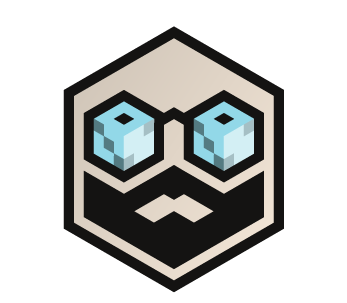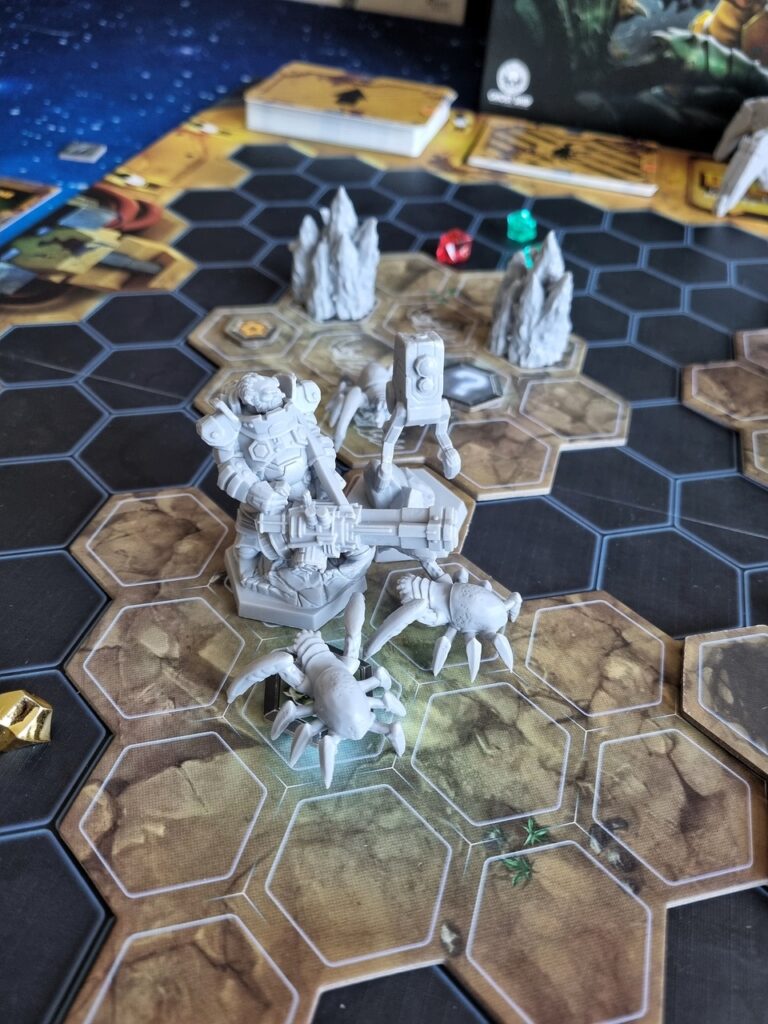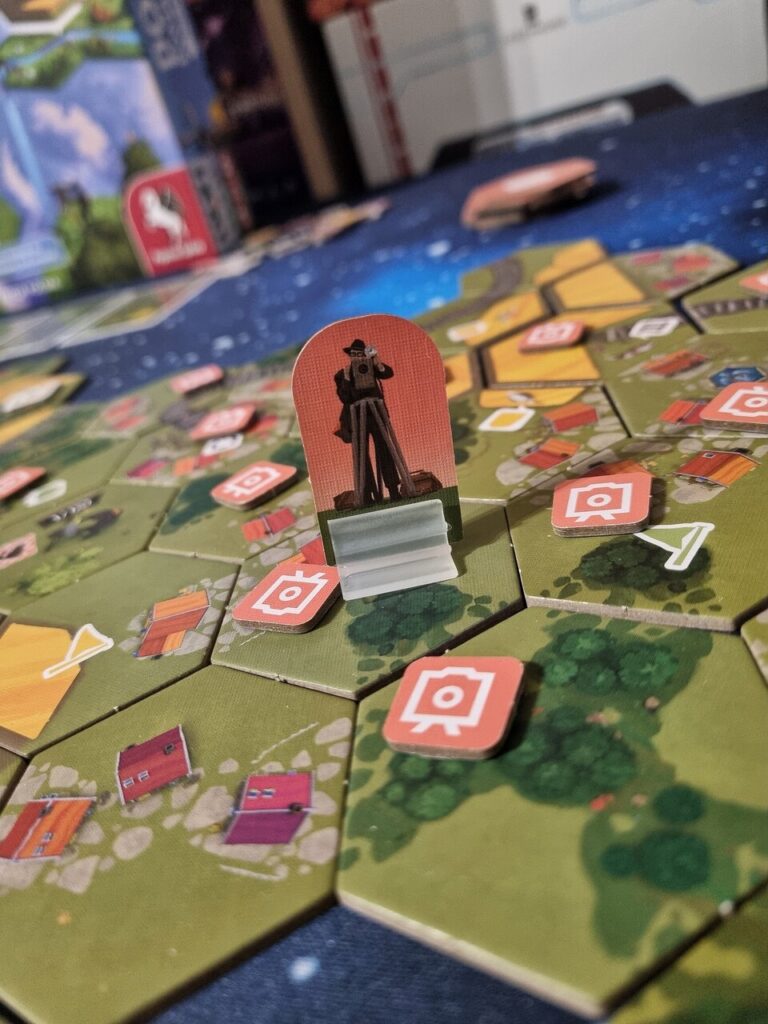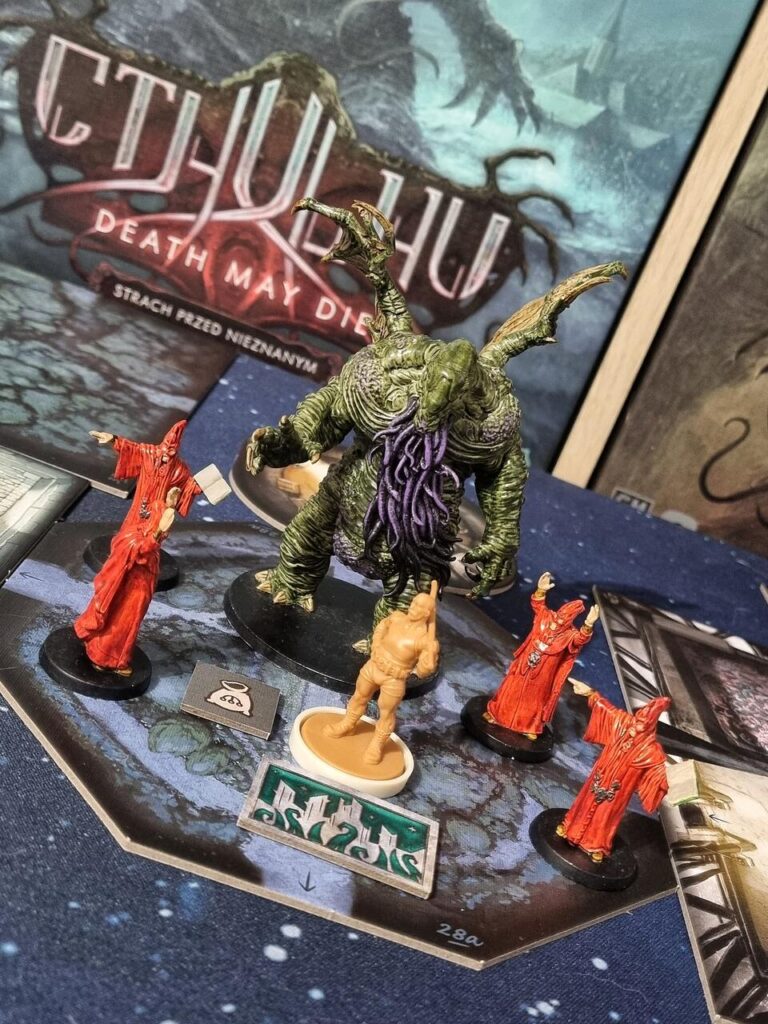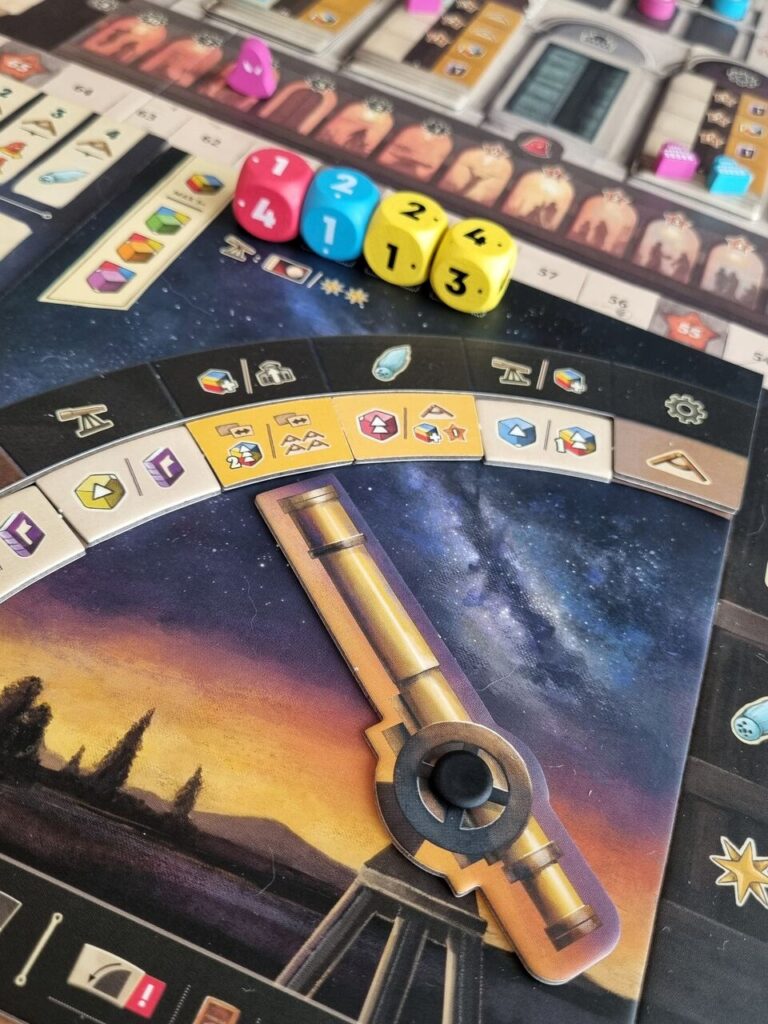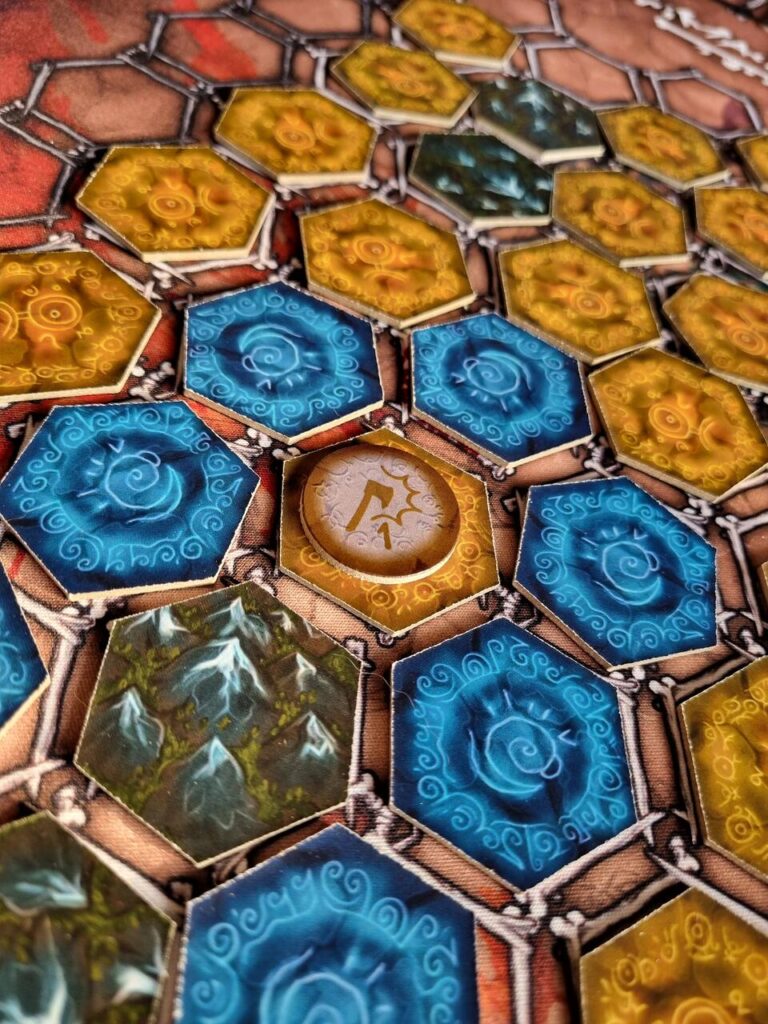Great Western Trail Argentina

At GWT Argentina we will continue to make rounds around the map and deliver our cows to the capital city. This time it is going to be Buenos Aires. Along the way we’ll be going choo-choo with our train, visiting various locations, constructing new buildings and, most importantly, building a herd of cows. We will also find out why cowboys like to breakdance.
Buenos Dias Buenos Aires
To get a closer look at this cow phenomenon, we have to go on a journey. We will take our first steps in any neutral building. This will slightly speed up our tour. We are already in a position to admire the beautiful lowlands of the Las Pampas.

Pfister’s cows
Nutritious food is the foundation of every journey. Each player receives the same deck of tasty cows. Cows differ in colour, name, strength and meat point value. When visiting some locations, we will be able to discard a cow (they are still alive, no need to inform PETA) to earn money.
By hiring new gauchos (shepherds) we will benefit from cow discount vouchers and be able to recruit new cows. They will be stronger, tastier and provide more nutritious points. We will also experience the taste of Wagyu purple meat, which dissolves in your mouth, not your hand.
The building of this cow deck is so minimal. This is because we will mainly be using these initial cows for various actions. We’ll use the new cows to make more money as we make deliveries. As with any deck building, we can also remove cows from the game to improve our card processing. We also have the ability to select and discard cows using different actions. This allows us to build the kind of hand we need.
Our cows will also be armed, but we’ll come back to that later.

Buildings A and B
When we get tired of visiting neutral locations on the map, we can become carpenters ourselves. We spend our hard-earned pesos to construct new buildings. We will also need to hire help, as the more heads we have, the better it gets. New buildings will give us new actions and new opportunities. Only we will be able to use these buildings, so it’s a bit selfish.
Buildings have two sides, A and B. We start the game deciding which side we want to play. We can even make it random. These 10 buildings are not just a cow, an action, a train and that’s it. Well, no senor and senoritas. These new actions allow us to get grain, distribute exaustion cards to other players, help farmers and move further into Argentina. There are more options. And that’s not all. By building on grain fields, we can increase the number of resources we gain. It all fits together beautifully. Although sometimes it’s hard to tell if something is on a grain field, because when we build a building, we cover up the icon that tells us about it. We can also build a new building on the foundations of the old one by paying the difference in price. This is the only way to build the strongest stops.
Train to points
The train in the previous part of the GWT was just a points engine. Now we are going to push further into the lowlands in order to take advantage of the shortcuts. The further our train goes, the faster we can reach Buenos Aires. That means more cows and more everything. Along the way, we’re going to build new stations to earn extra resources, bonuses, and endgame scoring. As a huge railway fan, I’m eager to buy a ticket to ride to go further and further. I’m not going to hide the fact that this is my favourite strategy for winning.
Farmers aka Bandit Shaming

Argentinean bandits have had to take off their bandanas to engage in legal farming. However, they will continue to lengthen our route by demanding a bribe/help from us. To help the farmers, we must visit them and collect a sufficient number of scythes. Our workers and cows will be using those weapons. To use the cows we have to discard them (they are still alive) and collect exhaustion cards. They clog up our deck and give us minus points at the end of the game. Each of us starts with one of these cards, but don’t worry, we can get rid of them by delivering them to Buenos Aires or removing them from the game.
When we help a farmer, we can hire him to harvest grain for us, or place him next to the board to give us points at the end of the game. We also get a small cash injection.
I’ve tried playing strategy with farmers and I have to say that somehow I don’t feel it. I know they produce the grain we need in this game. Hiring a farmer costs a lot of money, which we are always short of. I have tried, and I prefer not to collect exhaustion cards.
A dock full of ships 17.69% more GWT in GWT
Have you ever wondered what happens to the cows after they are delivered? GWT Argentina will answer this question for us. Now, after the cows are delivered, we will place our development discs on the ships according to the value of the cows delivered to Bueons Aires. This gives us another development opportunity. Ships of different colours will sail away, depending on how quickly the game progresses.

The discs of the ships that have left will move to 3 ports. Before each delivery, we have another step in which we can spend grain to place the disc from the port in the city. This gives us money and victory points. This is another new strategy added to GWT and I like this solution. It’s consistent with everything we do in the game.
Because of these 3 huge cities, the game takes up about 17.69% more of the table presence. However, in my opinion, it was a worthwhile addition to the game as it was a further expansion of our options. You may be wondering where I got these percentages from. Well, I recalculated the cow factor and multiplied the value by the square area of those 3 cities. Of course, I used Pfister’s third law for my calculations. The more cows, the better the game.
Our cities also affect the objectives available in the game. They often require our disc to be in a certain area of the city. The objectives are also more varied, and one building even allows you to discard them to raise a cow certificate.
I’m legen-dairy
Action development is what I like about the Great Western Trail. In the beginning, each of us only gets two auxiliary actions to choose from. With the next delivery of cows, our actions and abilities become stronger. We will be able to draw more cows, move faster and even unlock new actions. One of these new actions is the purchase of grain. Practically, it’s a must-have for farm strategy and disk city placement.
One Estancerios, Two Estancerios, Three Estancerios….
The gameplay in GWT Argentina is shorter, more streamlined, has more options, and those railway shortcuts make everything faster. Now it feels like a race to the finish line. The quilt gets shorter with every move, exposing our frozen hooves. Of course, the length of this race depends on the other players. Will they stop at every station? Or will they push forward to deliver as many cows as possible? Will any of them build buildings at all? Pfister’s second law states that time is like a cow’s udder. The more you stretch it, the longer you milk it.
For two people, the game took less than 2 hours to complete. It played very well, but everyone was mostly looking at their board and didn’t care too much about route selection. This changed when more players sat down at the table. There were more buildings on the board and we had to make more stops. Even though each of us could take more steps.
I didn’t count the time it took to set up the game. It’s a very long process and can be a bit tiring. I recommend hiring a suitable worker in the form of a wife, friend or other close person. My cat added 5-10 minutes to the setup time as I had to search the floor for cowboys.
Single Pedro
The solo mode in GWT Argentina is very good. It is simple and easy to use. In Pedro’s turn, we draw a card from his deck and resolve its effect. Pedro has practically the same abilities as we do and this is his biggest advantage. He will also specialise in some actions, which makes him quite replayable. Thanks to him, I learned how to play this game. Although GWT Argentina will not be my favourite game to play solo. Because I prefer to play it with live people.
From the board paradise through the hell of insert
There has been praise as well as admiration. Now it’s time to complain. The GWT Argentina has the same sensational player boards as the second edition. Everything is laid out on them and it gives me a similar feeling to buying extra player boards for Terraforming Mars.
However, there are also things that trample my good mood. The board is too reflective, sometimes making it impossible to see what is happening on the other side of the table. The yellow and orange farmers are very similar, which has caused some confusion. The ships do not have clear information about which port they are going to. We need to look closely at the colour of the anchor. The brown and black anchors are very similar. Our cowboys with their hats are very shaky because of this, they are break dancing. But I can live with that.
The worst part is the insert. You have to work very hard to pack everything carefully. There are special threads on BGG where people show other players how to keep everything in order. I keep bags of workers on the box. It keeps everything close together and makes my board tower look taller. This is exactly what I needed…
Steaks are higher and cows are more
I’ve reached the end of this great cow trail and I can tell you that every trip to Argentina has been excellent. I have enjoyed the many ways to win, the development of my herd, the construction of new buildings and, most importantly, riding my train.
Great Western Trail Argentina gives us more, more and more of that cow goodness. This game works like a well-oiled machine, combining many Euro aspects with the most important Pfister’s first law:
If something is good, make it even better.
You moooooost try it!
[Game provided by Rebel.pl]
